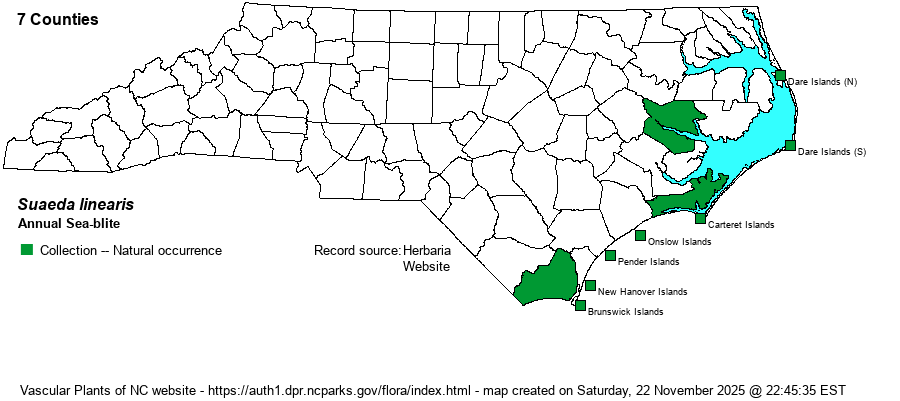| Author | (Elliott) Moquin-Tandon | |
| Distribution | Outer Coastal Plain, Outer Banks, and other barrier islands.
Maritime -- ME to southern FL, and TX; Mex, Bahamas. | |
| Abundance | Fairly common to common. | |
| Habitat | Brackish marsh edges, salt flats, storm overwashes. Typically found at the edges of wetlands, and not a true wetland species but not an obvious upland species either. |
| Phenology | Flowering and fruiting August-November. | |
| Identification | Annual Sea-blite is a somewhat fleshy, branched plant typically 8 inches to 2 feet tall. Leaves are linear and pointy, 7-20 mm long and rather well-spaced on the branches, typically strongly ascending. Flowers occur singly in leaf axils; the fruits are lens-shaped and mostly covered by the 5 sepals. Not as fleshy as glassworts, sea-blites are typically taller plants that possess obvious leaves. A small stand of the plants can look like a seedling red cedar (Juniperus) at some distance. This is a familiar plant of our coastal marsh edges and salt flats, along with one or more species of glassworts (Salicornia). | |
| Taxonomic Comments | None
| |
| Other Common Name(s) | Annual Seepweed, Southern Sea-blite | |
| State Rank | S4 | |
| Global Rank | G5 | |
| State Status | | |
| US Status | | |
| USACE-agcp | OBL link |
| USACE-emp | OBL link |

